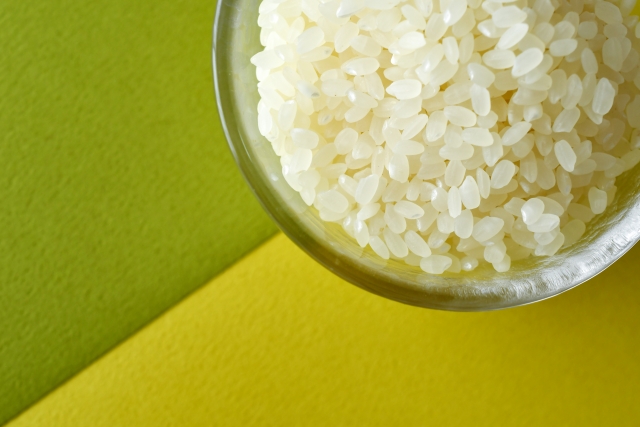
Introduction to Sake Rice
Sake, Japan's national beverage, is a testament to the country's rich culture and centuries-old traditions. At the heart of this iconic drink is a special ingredient that sets it apart from other alcoholic beverages: sake rice, known as "sakamai." Understanding sake rice is crucial to appreciating the art and science of sake brewing. This section delves into the essence of sake rice, exploring its unique characteristics and how it distinguishes itself from the more familiar table rice.
What Is Sake Rice?
Sake rice, or sakamai, is a variety of rice specifically cultivated for the production of sake. Unlike table rice, which is grown for consumption, sake rice has unique properties that make it ideal for brewing. These properties include a larger grain size, higher starch content, and a particular composition that facilitates the fermentation process necessary to produce sake. There are several varieties of sake rice, each contributing its own unique flavor profile and characteristics to the sake it produces. The choice of sake rice is one of the most critical decisions in the sake brewing process, directly impacting the flavor, aroma, and quality of the final product.
Sake Rice vs. Table Rice: What's the Difference?
While sake rice and table rice might appear similar to the untrained eye, they possess distinct differences that affect their respective uses in Japanese cuisine and sake brewing.
- Grain Size and Structure: Sake rice grains are larger and have a more pronounced shinpaku, or starchy core, compared to table rice. This starchy core is crucial for sake brewing as it contains the fermentable sugars needed to produce alcohol.
- Starch Content: Sake rice has a higher starch content, especially in the center of the grain, which is essential for fermentation. The outer layer of the grain, which contains proteins and fats, is often polished away during the sake-making process to access the pure starches within.
- Polishing Ratio: Sake rice is often polished to remove the outer layers, a process not typically done to table rice. The degree of polishing (seimaibuai) significantly influences the sake's flavor, aroma, and quality. Higher polishing ratios, meaning more of the grain's outer layers are removed, result in a lighter, more refined sake.
- Cultivation and Harvest: The cultivation of sake rice is more labor-intensive, often requiring specific climate conditions and care to ensure the quality of the grains. This attention to detail extends to the harvest, where sake rice is often hand-picked to maintain the integrity of the grains.
Understanding the differences between sake rice and table rice is just the beginning of appreciating the complexity and depth of sake. The type of sake rice used in brewing can transform the taste experience, making it an essential element of the sake production process.
The Significance of Sake Rice in Sake Brewing
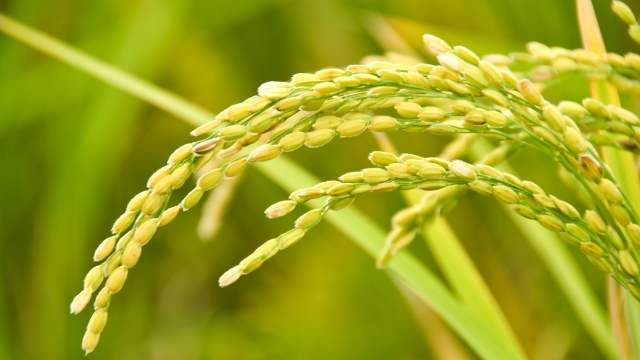
Sake brewing is a meticulous and refined process, where every ingredient plays a pivotal role in creating the final product. Sake rice, with its unique properties, stands at the forefront of this process, directly influencing the flavor, aroma, and texture of sake. Its significance in sake brewing cannot be overstated, as it serves as both the foundation and the soul of the beverage.
The Role of Sake Rice in Flavor and Texture
The Science of Starch Conversion
At the heart of sake brewing is the conversion of starches in the sake rice into sugars, which yeast then ferments into alcohol. This transformation is facilitated by koji mold (Aspergillus oryzae), which is carefully cultivated on the rice grains. The koji enzymes break down the complex starches in the shinpaku, the starchy core of the rice grain, into simpler sugars that yeast can ferment. The efficiency and thoroughness of this starch conversion process are crucial for high-quality sake production, with sake rice varieties optimized for their high starch content and favorable conversion properties.
How Rice Influences Sake's Profile
The variety of sake rice used in brewing significantly impacts the sake's flavor and texture. Different types of sake rice produce different levels of amino acids, proteins, and lipids, contributing to the sake's umami, body, and mouthfeel. For example, sake made with Yamada Nishiki rice, known for its excellent water absorption and starch characteristics, tends to be fragrant and well-balanced. In contrast, sake brewed with Gohyakumangoku rice often has a lighter, cleaner taste, suitable for crisp, dry sake styles.
Key Features of Sake Rice
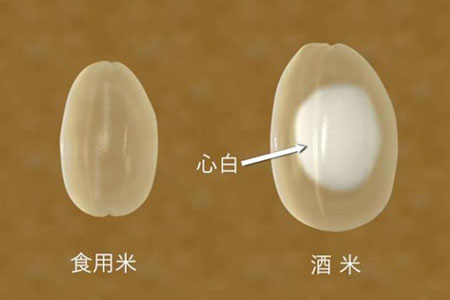
Image Via:senjyo.co.jp
Size Matters: Grain Size and Its Impact
The grain size of sake rice is larger than that of table rice, which has several implications for sake brewing. Larger grains have a more substantial shinpaku, allowing for a higher yield of fermentable sugars during the brewing process. Additionally, the size of the grains affects the polishing process; larger grains can be more precisely polished, enabling brewers to target the desired ratio of starchy core to outer proteins and fats, thus influencing the sake's flavor and clarity.
Starch Content: The Heart of Sake Rice
The starch content, concentrated in the grain's center, is the heart of sake rice. This starchy core, or shinpaku, is where the magic of sake brewing begins. High-quality sake rice has a clear, well-defined shinpaku that is rich in starches. These starches are pivotal for the fermentation process, as they are converted into sugars, which are then fermented into alcohol. The quality and characteristics of these starches determine the potential for creating sake with depth, complexity, and a smooth finish.
The Perfect Husk: Polishing Potential
The husk, or outer layer of the sake rice grain, contains proteins, fats, and minerals that can influence the sake's flavor, often adding unwanted complexity or harshness. The ability to polish rice, removing these outer layers to expose the pure starchy core, is a unique feature of sake rice. The polishing potential of sake rice is a critical factor in determining the style and quality of the sake. Rice polished to a high degree, removing a larger portion of the outer layers, produces a more refined and often floral or fruity sake, while less polished rice results in a richer, fuller-bodied sake with more pronounced rice flavors.
These key features of sake rice underscore its central role in sake brewing. The choice of rice, how it is polished, and its inherent characteristics all intertwine to dictate the journey of sake from grain to glass, influencing every aspect of its flavor, aroma, and texture.
Exploring Representative Sake Rice Varieties
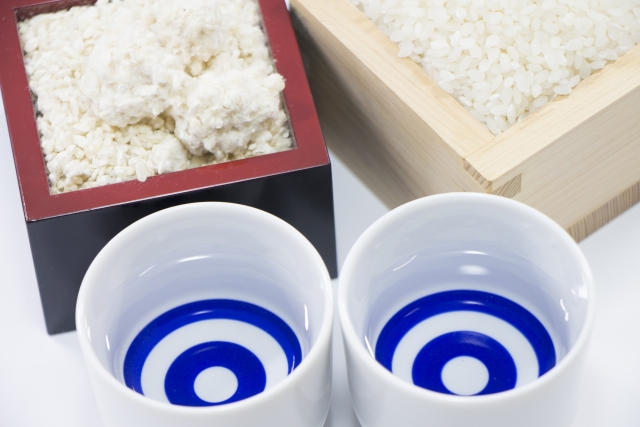
The world of sake rice is as diverse as it is fascinating, with each variety bringing its own unique characteristics and influences to the sake it produces. Here, we delve into some of the most renowned sake rice varieties, exploring their traits and the reasons behind their popularity among sake brewers.
Yamada Nishiki: The King of Sake Rice
Characteristics
Yamada Nishiki is celebrated for its large grain size, exceptional starch content, and superb water absorption qualities. Its well-defined shinpaku (starchy core) allows for efficient fermentation, making it ideal for brewing high-quality sake.
Why It's Preferred by Brewers
Brewers favor Yamada Nishiki because of its reliability and the unparalleled clarity of flavor it imparts to sake. It's versatile enough to produce a wide range of sake types, from delicate junmai daiginjo to robust junmai. The sake produced with Yamada Nishiki is often characterized by a refined, fruity aroma and a smooth taste.
Gohyakumangoku: The Versatile Choice
Characteristics
Gohyakumangoku rice has smaller grains compared to Yamada Nishiki and is known for its light and quick absorption of water. It has a less pronounced shinpaku, which lends itself well to the production of lighter, dryer sake varieties.
Comparison with Yamada Nishiki
While Yamada Nishiki is often associated with premium, aromatic sake, Gohyakumangoku is celebrated for its ability to produce sake with a crisp, clean finish. It is particularly favored in the Niigata region, where the preference leans towards dry, smooth sake.
Omachi: The Ancient Heirloom
Unique Features
Omachi is the oldest sake rice variety in Japan, known for its long stalks and susceptibility to disease, making it more challenging to cultivate. It has a distinctive flavor profile, with a more complex, earthy taste compared to other sake rice varieties.
How It Affects Sake Flavor
Sake made from Omachi rice is often more full-bodied and complex, with a depth of flavor that can include herbal, earthy, and sometimes fruity notes. It's a favorite among sake connoisseurs who appreciate its distinct character.
Miyama Nishiki: The Cool Climate Champion
Characteristics
Miyama Nishiki thrives in cooler regions, known for its adaptability to harsh climates. It produces sake with a robust and dynamic flavor profile, offering a good balance between umami and acidity.
Why It's Preferred by Brewers
Brewers value Miyama Nishiki for its ability to bring out a pronounced depth of flavor, especially in sakes that are brewed in colder environments. Its sake is appreciated for its versatility, pairing well with a wide range of foods.
Dewasansan: The Green Aroma Pioneer
Characteristics
Dewasansan, native to Yamagata Prefecture, is celebrated for its fresh, green aroma. It yields a light, refreshing sake with a hint of fruitiness, embodying the essence of the region's pure water and clean air.
How It Affects Sake Flavor
Sake brewed with Dewasansan is known for its vibrant, fresh profile, often described as having a "green" aroma reminiscent of apples or melons. It's favored in creating sake that leaves a refreshing impression, perfect for cleansing the palate.
Hattan Nishiki: The Hiroshima All-Rounder
Characteristics
Hattan Nishiki is cultivated primarily in Hiroshima and is known for its versatility in brewing. It supports a wide range of sake types, from light and smooth to more full-bodied options.
How It Affects Sake Flavor
This rice variety contributes to a clear, clean taste in sake, with subtle flavors that enhance rather than overpower the drink's overall profile. It's a popular choice for brewers looking to achieve a balanced sake experience.
Hitomebore: The Newcomer with Balance
Characteristics
Hitomebore, initially more famous as a table rice, has recently gained popularity in sake brewing for its balanced sweetness and acidity. It lends a harmonious flavor to sake, making it approachable and enjoyable.
How It Affects Sake Flavor
Sake made from Hitomebore tends to have a rounded, gentle taste, with a nice equilibrium between its sweet and acidic components. It's ideal for those new to sake or who prefer a less assertive flavor profile.
Koshihikari: The Table Rice Turned Sake Star
Characteristics
While primarily esteemed as Japan's premier table rice, Koshihikari's use in sake brewing has been on the rise. It imparts a rich, umami-packed flavor to sake, with a depth that surprises many.
How It Affects Sake Flavor
Sake produced with Koshihikari rice is often characterized by its richness and depth, offering a full-bodied experience with a pronounced rice flavor. It appeals to those who appreciate the intrinsic taste of rice in their sake.
Akita Sake Komachi: The Northern Gem
Characteristics
Akita Sake Komachi is prized for its suitability in cold climates, typical of its home prefecture, Akita. It has a smaller grain size but boasts high-quality starch content, making it ideal for producing fragrant and refined sake.
Why It's Preferred by Brewers
This variety is favored for its ability to impart a soft, smooth texture and a subtle, elegant aroma to the sake. It is particularly adept at creating sake with a balanced flavor profile that showcases the skill of Akita's sake brewers.
Aiyama: The Flavorful Rarity
Characteristics
Aiyama rice is rare and highly coveted for its exceptional quality. It has a large grain size with a high starch content, leading to sake with deep, complex flavors.
How It Affects Sake Flavor
Sake brewed with Aiyama rice is known for its rich, luxurious taste and aroma, often with a pronounced fruitiness and umami. Its scarcity and flavor profile make it a favorite among sake aficionados.
Hitogokochi: The Versatile Artisan
Characteristics
Hitogokochi, with its moderate starch content and good water absorption, is versatile for brewing various sake types. It is known for producing sake with a gentle, nuanced flavor.
How It Affects Sake Flavor
Sake made from Hitogokochi tends to have a balanced, smooth character with a clean finish. It's often used in crafting sake that appeals to a wide range of palates, making it a reliable choice for brewers.
Shinriki: The Robust Traditionalist
Characteristics
Shinriki is recognized for its traditional appeal and has been used in sake brewing for generations. It yields robust sake with a rich texture and depth of flavor.
How It Affects Sake Flavor
Sake brewed with Shinriki rice often has a hearty, full-bodied taste, with a strong presence of rice-derived flavors. It suits those who appreciate a more traditional, potent sake experience.
Ginpu: The Fragrant Breeze
Characteristics
Ginou is known for its exceptional ability to impart aromatic qualities to sake. It has a medium grain size and produces sake with a notably fragrant bouquet.
How It Affects Sake Flavor
Sakes made from Ginpu are characterized by their aromatic, floral, and sometimes fruity notes, offering a refreshing and elegant drinking experience. This variety is favored for creating aromatic sake types like ginjo and daiginjo.
Koshi Tanrei: The Crisp Innovator
Characteristics
Koshi Tanrei combines the desirable traits of two renowned varieties, Koshihikari and Gohyakumangoku. It is appreciated for its light and smooth texture, contributing to sake with a clean, crisp taste.
How It Affects Sake Flavor
Sake crafted from Koshi Tanrei is known for its sharp clarity and refined smoothness, making it perfect for those who enjoy a crisp, refreshing sake.
Kamenoo: The Heritage Grain
Characteristics
Kamenoo is a traditional sake rice variety with a history dating back over a century. It is known for its ability to produce sake with depth and complexity, offering a robust flavor profile.
How It Affects Sake Flavor
Sake made from Kamenoo rice is often rich and umami-forward, with a complexity that unfolds over time. This variety appeals to those who appreciate sake with historical depth and a strong, distinctive character.
List of Sake Rice Varieties by Japanese Regions
We introduce a list of sake rice varieties produced in prefectures across Japan.
| Hokkaido and Tohoku Regions | |
| Prefecture | Variety |
| Hokkaido | Ginpu, Suisei, Kitashizuku |
| Aomori | Kojonishiki, Hanaomoi, Hanafubuki, Toyonishiki, Seikeishu 184 |
| Iwate | Ginotome, Ginginga, Yui no Ka |
| Miyagi | Kuranohana, Hiyori, Miyamanishiki, Yamadanishiki |
| Akita | Akita Sake Komachi, Aki no Sei, Gin no Sei, Miyamanishiki, Kairyo Shinko Nishiki, Hanafubuki, Hoshiakari, Misatonishiki |
| Yamagata | Ushuhomare, Kairyo Shinko, Kamei, Kyo no Hana, Gohyakumangoku, Sake Mirai, Tatsu no Otoshigo, Dewasansan, Dewa no Sato, Toyokuni, Miyamanishiki, Yamadanishiki, Sake No. 4 |
| Fukushima | Gohyakumangoku, Hanafubuki, Miyamanishiki, Yumenoka |
| Kanto Regions | |
| Prefecture | Variety |
| Ibaraki | Gohyakumangoku, Hidahomare, Miyamanishiki, Yamadanishiki, Wakamizu, Wataribune |
| Tochigi | Gohyakumangoku, Tochigi Sake 14, Hitogokochi, Tamasakae, Miyamanishiki, Yamadanishiki, Wakamizu |
| Gunma | Gohyakumangoku, Maikaze, Wakamizu, Kairyo Shinko |
| Saitama | Sake Musashi |
| Chiba | Gohyakumangoku, Fusa no Mai |
| Kanagawa | Wakamizu, Yamadanishiki |
| Tokai, Hokuriku & Koshinetsu Regions | |
| Prefecture | Variety |
| Niigata | Gohyakumangoku, Ipponjime, Omachi, Kikusui, Koshinokagura, Koshitanrei, Takanenishiki, Hattannishiki No. 2, Hokuriku No. 12, Yamadanishiki |
| Toyama | Oyamanishiki, Gohyakumangoku, Tomi no Ka, Miyamanishiki, Yamadanishiki |
| Ishikawa | Gohyakumangoku, Ishikawamon, Hokuriku No. 12, Yamadanishiki |
| Fukui | Gohyakumangoku, Okuhomare, Koshi no Shizuku, Shinriki, Yamadanishiki |
| Yamanashi | Gin no Sato, Tamasakae, Hitogokochi, Yamadanishiki, Yume Sansui |
| Nagano | Hitogokochi, Miyamanishiki, Kinmonnishiki, Shirakabanishiki, Takanenishiki |
| Gifu | Gohyakumangoku, Hidahomare |
| Shizuoka | Gohyakumangoku, Homare Fuji, Yamadanishiki, Wakamizu |
| Aichi | Yume Sansui, Wakamizu, Yumeginga |
| Mie | Isehikari, Kamino Ho, Gohyakumangoku, Yamadanishiki, Yuminari Ho |
| Kansai Regions | |
| Prefecture | Variety |
| Shiga | Ginfubuki, Tamasakae, Yamadanishiki, Shiga Wataribune No. 6, Hakutsurunishiki, Hyogo Kitanishiki, Hyogo Koinishiki, Hyogo Yumenishiki, Fukunohana、Benkei, Yamadabo, Wataribune No. 2 |
| Kyoto | Iwai, Gohyakumangoku, Yamadanishiki |
| Osaka | Omachi, Gohyakumangoku, Yamadanishiki |
| Hyogo | Gohyakumangoku, Yamadanishiki, Aiyama, Inishienomai, Shiragiku, Shinyamadabo No. 1, Shinriki, Takanenishiki, Tajima Gouriki, Toji no Yume, Nojyo Ho |
| Nara | Tsuyuhakaze, Yamadanishiki |
| Wakayama | Yamadanishiki, Gohyakumangoku, Tamasakae |
| Chugoku & Shikoku Regions | |
| Prefecture | Variety |
| Tottori | Gouriki, Gohyakumangoku, Tamasakae, Yamadanishiki |
| Shimane | Kairyo Omachi, kairyo Hattan nagare, Kami no Mai, Gohyakumangoku, Sakanishiki, Yamadanishiki |
| Okayama | Omachi, Yamadanishiki |
| Hiroshima | Omachi, Koiomachi, Senbonnishiki, Hattan, Hattannishiki No. 1, Yamadanishiki |
| Yamaguchi | Gohyakumangoku, Saito no Shizuku, Hakutsurunishiki, Yamadanishiki |
| Tokushima | Yamadanishiki |
| Kagawa | Omachi, Yamadanishiki |
| Ehime | Shizuku Hime, Yamadanishiki |
| Kochi | Kazenaruko, Gin no Yume, Yamadanishiki |
| Kyushu Regions | |
| Prefecture | Variety |
| Fukuoka | Yamadanishiki, Omachi, Gin no Sato, Gohyakumangoku, Jyugemu |
| Saga | Saikai 134, Saga no Hana, Yamadanishiki |
| Nagasaki | Yamadanishiki |
| Kumamoto | Yamadanishiki, Gin no Sato, shinriki |
| Oita | Omachi, Gohyakumangoku, Yamadanishiki, Wakamizu |
| Miyazaki | Hanakagura, Yamadanishiki |
The Influence of Terroir on Sake Rice
Terroir, a term often associated with wine, plays a crucial role in the cultivation of sake rice and, consequently, in the brewing of sake. It encompasses the environmental conditions, especially soil and climate, that give agricultural products their unique characteristics. For sake rice, terroir influences everything from the grain's size and starch content to its ability to absorb water and nutrients.
How Location Affects Rice Characteristics
Regional Varieties
Japan's diverse climatic zones contribute to the cultivation of different sake rice varieties. For example, the cold winters and hot summers of the Niigata region are suitable for growing Gohyakumangoku rice, which is known for producing sake with a crisp, clean taste. In contrast, the warmer climate of the Hyogo Prefecture favors the growth of Yamada Nishiki, the king of sake rice, which is ideal for producing aromatic and complex sake.
Impact of Climate and Soil
The climate affects the growth cycle of sake rice, influencing its texture and flavor profile. Soil type also plays a significant role; rice grown in mineral-rich soil tends to have a deeper flavor. The interaction between these elements determines the rice's suitability for different styles of sake, influencing brewers' choices and the resulting sake's characteristics.
Case Studies: Sake Rice from Different Prefectures
Each prefecture in Japan has sake rice varieties that thrive in its unique terroir, contributing to the regional diversity of sake. For instance, Miyagi Prefecture's "Sasanishiki" is renowned for its suitability in cold climates, leading to sake with a smooth and subtle taste. Meanwhile, "Omachi" rice from Okayama Prefecture, grown in a warmer environment, produces sake with a rich, full-bodied flavor.
Selecting Sake Rice for Brewing

The Brewer's Perspective: Choosing the Right Rice
Brewers select sake rice based on several criteria, including grain size, starch content, and the rice's ability to absorb water and ferment evenly. The choice of rice significantly impacts the sake's flavor, aroma, and texture, making it a critical decision in the brewing process.
Criteria for Selection
- Grain Size and Starch Content: Larger grains with more starch are preferred for their fermentable sugar content.
- Absorption and Fermentation Characteristics: Rice that absorbs water well and ferments evenly is ideal for sake brewing.
- Purity of Flavor: The rice should contribute a desirable flavor profile that complements the sake's intended style.
Challenges in Cultivation
Cultivating sake rice is more labor-intensive than growing table rice. It requires careful management of irrigation, precise timing of planting and harvesting, and constant monitoring for pests and diseases. These challenges are compounded by the need for specific climate conditions, making sake rice cultivation a delicate balance between tradition and innovation.
The Science Behind Rice Polishing
How Polishing Ratio Affects Sake
The polishing ratio, or "seimaibuai," refers to the percentage of the rice grain that remains after the outer layers have been removed. A lower ratio indicates more polishing, leading to sake with a lighter, more refined taste. The polishing process exposes the starchy core, which is crucial for fermentation, directly influencing the sake's flavor profile.
Polishing Technology Advancements
Advancements in rice polishing technology have allowed brewers to achieve more precise and consistent polishing ratios, enhancing the quality and diversity of sake. Modern machines can gently polish rice grains to the desired ratio without causing excessive breakage, preserving the integrity of the starchy core. This technological evolution has opened new possibilities in sake production, enabling brewers to experiment with different polishing levels to create unique and innovative sake varieties.
The Future of Sake Rice: Trends and Innovations
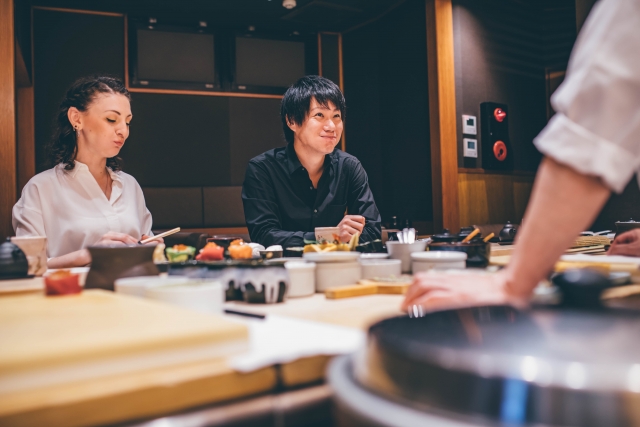
The world of sake rice is evolving, with ongoing research and development paving the way for new varieties and cultivation methods that promise to enhance both the sustainability of rice farming and the quality of sake.
Research and Development: New Varieties on the Horizon
Genetic Engineering
Scientists are exploring genetic modifications to create sake rice strains that are more resistant to pests and diseases, require fewer chemical inputs, and are adaptable to changing climate conditions. These innovations not only aim to increase yield and reduce environmental impact but also to enhance the flavor profiles of sake.
Sustainable Farming Practices
The sake industry is increasingly adopting sustainable farming practices, such as organic cultivation, reduced water usage, and natural pest control methods. These practices contribute to the preservation of ecosystems and promote the health of the soil, which, in turn, improves the quality of sake rice.
The Global Expansion of Sake Rice Cultivation
Sake Rice Farming Outside Japan
Sake rice cultivation is expanding beyond Japan's borders, with successful planting in countries like the United States, Australia, and Brazil. This global expansion not only caters to the rising international demand for sake but also tests the adaptability of sake rice varieties to different terroirs, potentially introducing new flavors to the market.
Impact on Global Sake Quality
The international cultivation of sake rice offers the opportunity to blend traditional Japanese brewing techniques with the unique characteristics of local terroirs. This cross-pollination could lead to innovative sake products with global appeal, raising the quality and diversity of sake available worldwide.
The Art of Enjoying Sake: How Rice Makes a Difference
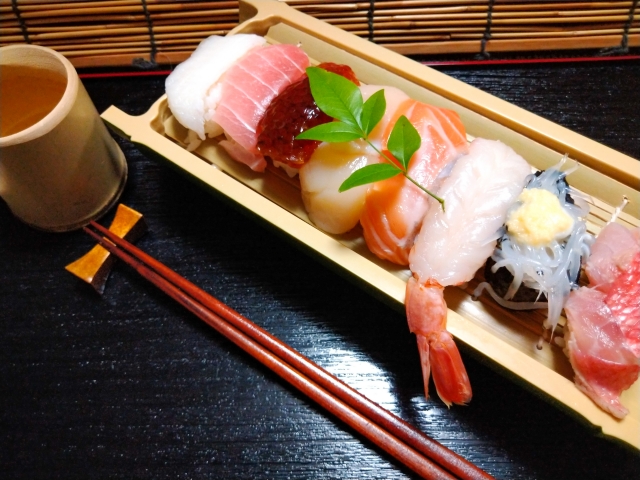
Tasting Notes: Identifying Sake Rice in Your Glass
Guide to Tasting
Understanding the influence of different sake rice varieties on taste can greatly enhance your sake experience. Look for the sweetness, acidity, umami, and texture in the sake, which can be linked back to the rice type used. For example, sake made with Yamada Nishiki often exhibits a balanced, fruity profile, while Omachi rice tends to produce a more earthy and complex flavor.
Pairing Food with Different Sake Rice Types
The characteristics of sake rice can complement various cuisines. Lighter, crisp sake pairs well with delicate dishes like sashimi, while fuller-bodied sake can stand up to richer foods like grilled meats or stews. Experimenting with pairings can unlock new taste sensations and elevate the dining experience.
Summary: Savoring the Diversity of Sake Rice
Exploring different sake rice varieties offers a gateway to the rich cultural heritage and craftsmanship of sake brewing. Each variety brings its own story and flavor profile, contributing to the vast tapestry of sake available. By delving into this diversity, enthusiasts can discover new favorites and deepen their appreciation for sake.
FAQs: Everything You Wanted to Know About Sake Rice
Q1: What makes sake rice different from table rice? A1: Sake rice is distinct from table rice in several ways, including grain size, starch content, and the presence of a starchy core known as shinpaku. These characteristics make it more suitable for sake brewing, as they allow for efficient fermentation and contribute to the sake's flavor and texture.
Q2: Why is the polishing ratio important in sake brewing? A2: The polishing ratio determines how much of the outer layer of the rice grain is removed before brewing. A lower ratio means more of the grain has been polished away, exposing the starchy core, which can lead to a more refined and lighter sake with fewer impurities.
Q3: Can sake rice be grown outside of Japan? A3: Yes, sake rice cultivation has successfully expanded to other countries, including the United States, Australia, and Brazil. The adaptability of sake rice to different climates and terroirs can introduce unique flavors and characteristics to the sake produced.
Q4: How do different varieties of sake rice impact the taste of sake? A4: Each sake rice variety has its own unique properties that influence the final taste of sake. For example, Yamada Nishiki tends to produce sake with a balanced, fruity profile, while Gohyakumangoku is known for yielding a cleaner, crisper taste. The choice of rice variety allows brewers to craft a wide range of sake styles.
Q5: Are there any sustainable practices in sake rice cultivation? A5: The sake industry is increasingly adopting sustainable practices, such as organic farming, reduced water usage, and natural pest management. These methods not only support environmental health but can also enhance the quality of the sake rice.
Glossary: Sake Rice Terminology Unveiled
- Sake Rice (Sakamai): Rice specifically cultivated for sake brewing, with qualities that are ideal for fermentation.
- Shinpaku: The starchy core of sake rice grains, crucial for sake brewing as it contains the fermentable sugars needed to produce alcohol.
- Polishing Ratio (Seimaibuai): Indicates the percentage of the rice grain that remains after polishing; a key factor in determining sake's style and flavor profile.
- Terroir: The environmental conditions, including soil and climate, that affect the characteristics of sake rice.
- Koji (Aspergillus oryzae): A mold used in sake brewing to convert the starches in rice into sugars for fermentation.
- Junmai: A term used to describe sake made with only rice, water, koji, and yeast; no added alcohol.
- Daiginjo: A premium category of sake for which the rice is polished to at least 50% of its original size, known for its delicate and complex flavors.
- Ginjo: Sake made from rice polished to at least 60% of its original size, offering a light and fruity profile.
- Umami: A taste category often described as savory or meaty, which is a key flavor component in sake.
